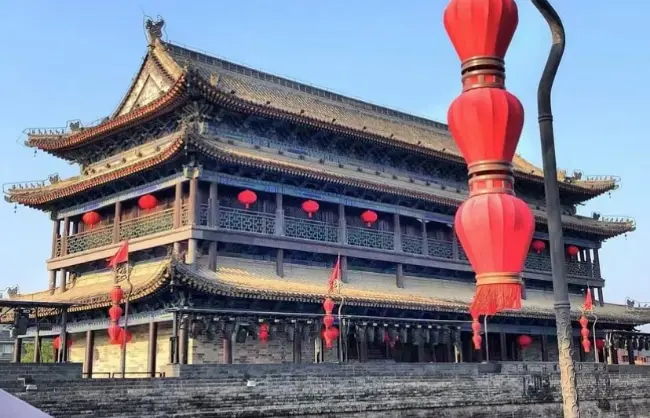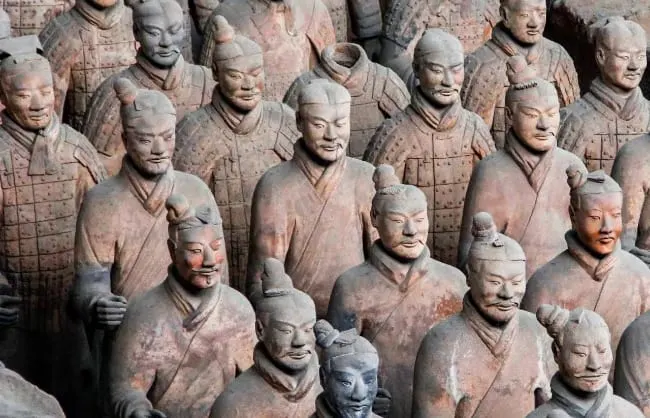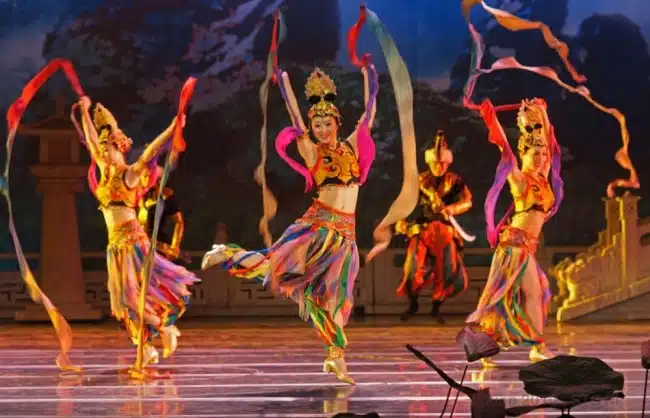Is Xi’an Worth Visiting? Reasons to Visit Xi’an
Written by Veronica |
Is Xi’an worth visiting? Undoubtedly. It had been the ancient capital of China for over 1,100 years. That alone speaks volumes on the rich historical and cultural heritage it holds. Aside from that, if you travel to Xian, you’ll also be granted a wonderful culinary experience, stunning natural scenery, traditional arts and crafts, entertainment and nightlife, and the excitement of shopping.
Is Xi’an Worth Visiting?
As one of the top places to visit in China, Xi’an should definitely be part of your China tour. It is a great place to get a taste of both China’s rich history and contemporary life. There are a wide range of attractions and things to do.
If you’re fascinated by ancient Chinese history Xi’an is the former capital of several dynasties and the eastern endpoint of the Silk Road. It is home to many historical sites, for example, the world wonder Terracotta Army, the impressive City Wall, the Bell Tower, Drum Tower, the Muslim Quarter, and the magnificent Big Wild Goose Pagoda.
On top of that, Xi’an is also famed for its street food and a variety of noodles special to the area, including Roujiamo, Liangpi, Yangrou Paomo, and Biangbiang noodles. Countless people from other regions in China and abroad visit Xi’an just for these delicacies.

Reasons to Visit Xi’an
1. Historical and Cultural Heritage
As China’s oldest city, Xi’an has a history of over 3,000 years. It served as the capital city for 13 dynasties, including Qin, Han, and Tang. You can choose to take a small group tour or a private tour through the historical and cultural heritage left behind from Xi’an’s glorious past.
The most extraordinary site that everyone comes to see in Xi’an, is the Terracotta Army, an assembly of life-sized clay soldiers and horses buried alongside China’s first emperor, Qin Shi Huang, in his tomb. The discovery is regarded as one of the most significant archaeological finds of the 20th century. Join a Xi’an Terracotta Army China tour to witness the world wonder in person and learn about the history, discovery process behind it.
The mausoleum of Qin Shi Huang, about 18.6 miles (30 kilometers) east of Xi’an, is an enormous 21.6-square-mile (56-square-kilometer) complex. It encompasses palaces, halls, towers, and tombs. A large number of treasures were buried with Qin Shi Huang, guarded by all kinds of hidden traps. The mausoleum remains partially unearthed, leaving mysteries waiting to be revealed.
The Big Wild Goose Pagoda was constructed during Tang Dynasty by the well-regarded monk Xuanzang. It is a seven-story brick temple standing 210 feet (64 meters) tall. It houses invaluable relics and statues demonstrating Xi’an’s cultural exchanges along the ancient Silk Road.
Xi’an City Walls is the most intact and well-maintained ancient fortifications in China. They were constructed during Ming Dynasty upon the foundations of the earlier Tang Dynasty walls. These city walls span 8.7 miles (14 kilometers), have four gates, 98 ramparts, and a moat. Standing on them, you’ll have a panoramic view of the ancient city.
Recommended Tours:

2. Culinary Delights
Xi’an cuisine has a unique place in the hearts of Chinese people. Many travel to Xi’an just for a food tour to satisfy their tastebuds. You’ll find snacks and dishes unique to the region, as well as ones with other cultural influences.
With a large Muslim community, Xi’an has a distinctive halal food culture. The Muslim Quarter, adjacent to the Drum Tower, is where you’ll find stalls and vendors serving authentic local street food.
The most famous dishes to try include the Roujiamo, known as the “Chinese hamburger.” It’s seasoned beef or lamb wrapped in a flatbread. Yangrou Paomo is a bowl of flavorful lamb broth with vermicelli and pickled garlic. You’re supposed to tear bread into small bits to add into the broth.
Another one of the most famous specialties is Biang Biang noodles, hand-stretched thick noodles topped with a flavorful mix of chili oil, vinegar, and more. It is named after the rhythmic sound of dough preparation.
Suantang Shuijiao are beef and chive dumplings in a special flavored broth. If you’re really keen for dumplings, De Fa Chang Restaurant could be a great option, featuring 44 different kinds with pork, shrimp, and more. Finish off your meal with something sweet like Zenggao, a sticky, sugary pastry made from glutinous rice, jujube, and brown sugar.
Recommended Tours:
- 2-Hour Muslim Quarter Night Walking Food Tour
- Best Xian Evening Local Food Tour (by Tuk-Tuk)
- Yuanjiacun Village Folk Culture and Food Day Tour
Yangrou Paomo
3. Natural Scenery
Your Xian tour won’t be short of natural scenery either. The city is surrounded by mountains and rivers, giving you plenty of chances for outdoor activities.
A must-see natural wonder in Xi’an is Huashan Mountain, one of China’s most magnificent peaks. Its summits, steep cliffs, and views have drawn countless visitors. It’s a sacred site for Taoism, Buddhism, and Confucianism, with numerous temples and shrines.
You can trek along trails of varying difficulty or take a cable car ride to the summit. And for you adventurers out there, try walking on the narrow plank road clinging on the side of the cliff. It’ll surely be an unforgettable experience of your China Xi’an tour.
Another spot to visit is the Huaqing Palace, a royal hot spring retreat with lush gardens and pools. It was constructed during Tang Dynasty for Emperor Xuanzong’s beloved concubine, Yang Guifei, at the base of Lishan Mountain. Relax yourself in the hot springs known for their health benefits while admiring the splendid architecture, sculptures, and paintings that echo the palace’s history.
Recommended Tours:
Mt. Huashan
4. Art and Crafts
If you’re wondering about what to do in Xi’an to learn more about about its culture, there are a number of places to get to know traditional arts and craftsmanship like paper-cutting, shadow puppetry, pottery, and calligraphy. These artistic traditions, deeply rooted in history, represent unique local aesthetics.
Tour these museums and workshops to learn the history and techniques behind the art forms, bring home meaningful souvenirs, or even engage in the creative process yourself.
- Paper-cutting is a folk art that involves creating intricate designs by trimming colorful paper. The artworks are often used for decorations during certain festival celebrations. Visit Paper-cutting Museum or take a class to make your own during your Xi’an tour.
- Shadow puppetryis an artistic form of storytelling with a history of 2,000 years. With flat leather puppets, performers cast shadows on a screen. After seeing a shadow puppetry show at Shaanxi Folk Art Theater, visit the Shadow Puppet Museum to learn about puppet-making.
- Potteryis closely linked to the making of Terracotta Army. It involves shaping clay into various shapes. See the clay soldiers at the Terracotta Army Museum. You can also join a pottery workshop to create your own pieces.
- Calligraphy is a Chinese art form that involves a lot of skill, study, practice. Admire works by famous artists at Forest of Stone Steles Museum or have a try yourself in calligraphy lessons.
Recommended Tours:
- 2-Hour Leather Shadow Play Class
- 2-Hour Chinese Calligraphy Class
- 2-Hour Tai Chi Class
- 3 Days Xi’an History & Culture Learning Tour
5. Entertainment and Nightlife of Xian
A Xi’an tour can’t just be about its ancient history. It is also a bustling modern city that doesn’t go to sleep easily at night. Take a Xian night tour past the city’s illuminated landmarks, see Tang Dynasty Show, and walk down Defu Lane.
- The Tang Dynasty Showis a musical performance that resurrects the music and dance of the Tang era, a period considered the zenith of Chinese civilization. See the show at the Tang Dynasty Palace or Shaanxi Grand Opera House in Xi’an. Don’t miss the chance to join a dumpling banquet before or after the show.
- Defu Lane is a bar street near the South Gate of city walls. There are pubs, karaoke bars, cafes, clubs, and live music venues busy with both locals and tourists. Unwind with drinks, music, dancing, or simply chatting with friends. Some popular spots include The Belgian Bar, 3As4 Bar, Salsa Club, and INNEST.
- A Xi’an night tour will give you a different perspective of the ancient city. Watch the city’s landmarks light up after dark, including the Bell Tower, Drum Tower, Giant Wild Goose Pagoda, City Wall, and Fountain Square. It’s your perfect chance to explore the night markets and taste the street foods along the way.
Recommended Tours:
- Xian Tang Dynasty Show & Dumpling Dinner Tour
- Xian Music Fountain Night Show Tour
- Xian Night Tour to Bell Tower Square and Music Fountain Show

6. Shopping in Xian Markets
There are plenty of local specialties to bring home from Xi’an like silk, jade, antiques, paintings, and handicrafts. Hunt treasure in the markets such as Shuyuanmen Culture Street, the Muslim Quarter, and the Antique Market. Here’s a useful shopping tip: feel free to bargain for better prices in the markets with street vendors or in small shops. Keep in mind that it’s not acceptable in malls or supermarkets.
Shuyuanmen Culture Street is close to the Forest of Steles Museum. It’s where you go to find local arts and crafts like calligraphy rubbings, paper cuts, paintings, seals, and books. You can also observe the skillful artists and craftsmen at work and ask them to customize your piece.
The Muslim Quarter is a lively area near the Drum Tower. It’s renowned for its diverse food options and souvenir shops. Try local halal snacks and find Xi’an souvenirs such as replicas of terracotta warriors, Tang tri-color porcelain, jade articles, and silk products.
The Antique Market is near the Small Wild Goose Pagoda. It’s a where you’ll find amazing antiques and curios. Browse through bronze ware, porcelain, coins, jewelry, and paintings. You’ll often see collectors and experts sharing their expertise.
Recommended Tours:









